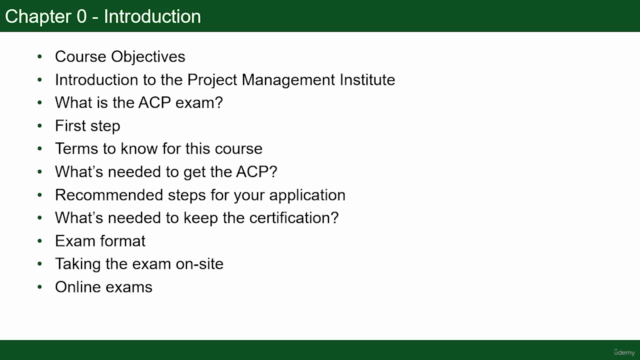PMI Agile Certified Practitioner (PMI-ACP)® Exam Prep
Aligns to latest exam requirements
4.07 (134 reviews)

470
students
4 hours
content
Apr 2022
last update
$49.99
regular price
What you will learn
Prepare for the Agile Certified Practitioner (PMI-ACP) exam
Learn how agile principles transform team performance, deliver outcomes and improve customer satisfaction
Empower and inspire your collaborative team
Improve stakeholder engagement
Apply agile techniques to manage a project's scope and value
Combine best methods from multiple agile methodologies such as Kanban, Scrum etc.
Learn to lead the team away from the pitfalls
Build a reactive and responsive culture
Embrace change quickly and effectively to seize competitive advantage for your customer
Deliver success even when challenged with unforgiving environments
Screenshots




1556868
udemy ID
2/16/2018
course created date
8/23/2020
course indexed date
Bot
course submited by